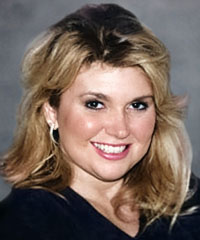NNPS Middle School

Angela Seiders, Executive Director
Pk-12 School Leadership
Phone: (757) 591-4647
Tips for Parents and Students
Establish a routine – but be flexible. Most middle schools start earlier than elementary schools (some begin at 7:20 a.m.), so get into the habit of going to bed early enough to get the recommended eight to 10 hours of sleep. Think of sleep time as cumulative over the course of the week; if you have to stay up late studying or competing/performing, try to make up the difference the next night.
Stay in-the-know. Check the school’s website and teachers’ websites to stay current on events and assignments. Parents can visit the school to obtain a log-in and password for access to ParentVUE, which includes information about students’ grades and attendance (parent must bring photo ID).
Choose friends wisely. Learn to recognize so-called friends who don’t have your best interests in mind. Maintain close relationships with those who are goal-oriented, positive, trustworthy and fun! You don’t have to like everyone, but you do have to RESPECT everyone.
Be organized. Have a system for maintaining papers, notes, homework, classwork and supplies. Use a planner or agenda book consistently to record homework assignments.
Get involved. Join a club, play a sport, volunteer in the community, attend school-sponsored events. Extracurricular involvement is a great way to make friends and develop time-management skills. But, avoid becoming overcommitted! It’s better to devote your time and energy to a couple of activities than to spread yourself too thinly. Parents can join the PTA in order to stay active in the school!
Use social media responsibly. Parents should monitor students’ online activity and not permit access to sites like Facebook (the age requirement when registering for an account is 13), as these public forums are often misused and can be dangerous for students who are not developmentally mature enough to handle the responsibility of a social networking account.
Dress appropriately. Follow your middle school’s dress code.
Practice good locker habits. You only get a couple visits to your locker each day, so get everything you need while you’re there. Don’t linger at your locker because other students need to get to their lockers, too. Memorize your combination so you can be more efficient at locker time. Remember: Turn the dial right, then left, then right.
Utilize your resources. Every school is equipped with a team of professionals to assist you with concerns or questions you have. Also, take advantage of after-school tutoring sessions with teachers when needed.
Keep a positive attitude. Support your teachers. Take responsibility for yourself, and find opportunity in every experience.
What worries students about middle school?
In no particular order: eighth-graders, fitting in, lockers, more demanding classes and the chaos of class changes. But students say information and preparation go a long way toward smoothing the transition.
It's the unknowns that loom largest. Current middle-school students say they didn't understand the structure of teams of teachers and students. Some didn't know about middle-school magnet programs – or how many middle schools there are in Newport News Public Schools. Before they started sixth grade, they didn't know that students in different grade levels have little contact with each other at school – or that they wouldn't have every subject every day.
Having a rough idea of the daily schedule would help, they say. Having a planner with them on the first day of school is a must. Knowing how to open a locker and being skilled at moving their belongings from room to room is important. And, knowing they're not the only ones with those concerns is reassuring.
Open houses and counselor visits to fifth-grade classes make the move to a new school easier. It's also comforting for students to know they're not alone. Everyone is nervous on the first day of class.
Parents can help by talking to children about the transition. Students' concerns include finding their way around the school, wondering how they will fit in, being organized and getting between classes on time, social dynamics and making new friends, and adjusting to an earlier start to the school day, which has middle-schoolers at the bus stop in the dark in winter.
Knowing someone who's been to middle school also helps. Friends and family who have been in middle school can talk about the courses they'll be taking and give advice about what to expect. They can talk about class changes, odd and even days, and the need for hall passes.
Most middle-school students say feeling like they were a part of things didn't take long. Many have commented that their sixth-grade teachers were especially welcoming and inclusive. While the students do have a sense of belonging, they also say they still feel pressure to fit in, especially when it comes to clothes. They're divided about the merits of school uniforms.
Starting middle school presents new academic challenges. English classes are often more challenging, and some students find algebra can be difficult. Exams for high-school courses also are a new experience. Children who didn't have to study in elementary school will need to better learn this skill when they get to middle school.
Students enjoy a greater range of choices for school clubs and activities, but they shouldn't go overboard at first and sign up for too many organizations. New middle-school students are advised to limit their participation to two or three activities. The students often appreciate the greater options offered by their school cafeterias.
Middle schools are more than just K-5 programs on a larger-scale. The approach to educating students in grades six through eight is tailored to physical, mental, emotional and social changes students are experiencing in adolescence and those on the horizon. In practical terms, that means:
-
The middle school population is larger, but students in different grades keep to themselves. They have a core group of three or four teachers and belong to teams. Those smaller worlds within a school create an environment that mimics the closeness of an elementary school and provides a sense of belonging while allowing students to grow into new roles.
-
The team approach (a core team usually has English, math, social studies and science teachers) allows the group to coordinate planning, find common ground across the curriculum and offer students more personalized individual attention. The presence of a number of adults with whom they're in regular contact also helps ensure that students can find an adult mentor. Each grade level usually has a counselor and assistant principal, too.
-
Learning is more active. Because adolescents are naturally curious and adventurous, they learn more effectively by interacting and participating in activities instead of listening. But they still have to listen.
-
Some middle school students are just tall enough to ride adult rides at an amusement park, while others are approaching six feet in height and sprouting facial hair. In addition to the physical transformation of adolescence, there are intellectual, emotional and social changes students have to weather. Their thinking becomes more abstract. Their emotions can seesaw. Socially, they are learning what makes them tick as individuals and how they fit into larger social groups. Middle school is designed to help them make the transition.
-
Related arts classes cover a variety of interests, like music, art, foreign languages, computers and magnet program courses. There also are dozens of clubs and activities and intramural and interscholastic athletics in which students can participate. Career exploration becomes more systematic and purposeful in middle school, and some organizations and clubs reflect that.






